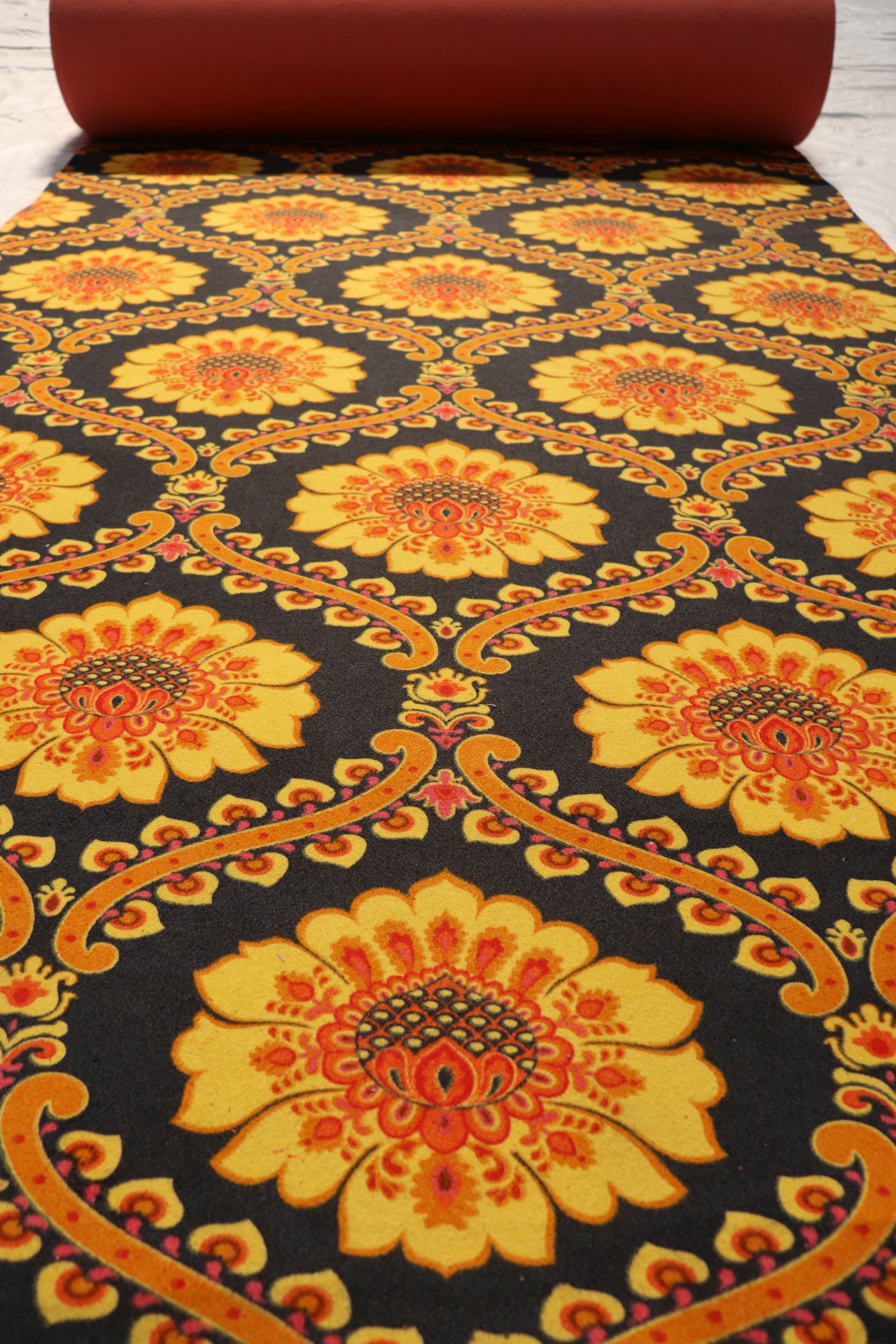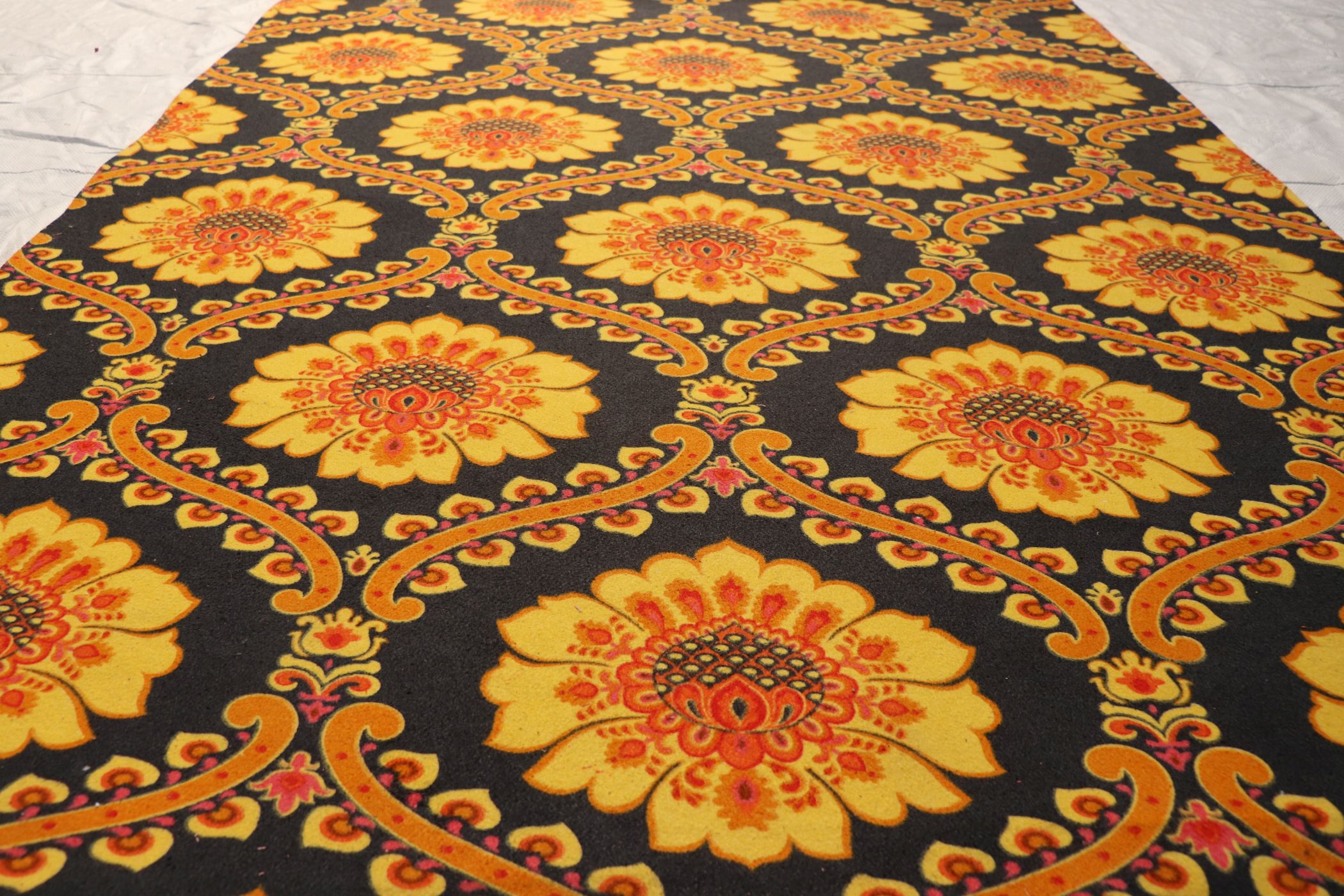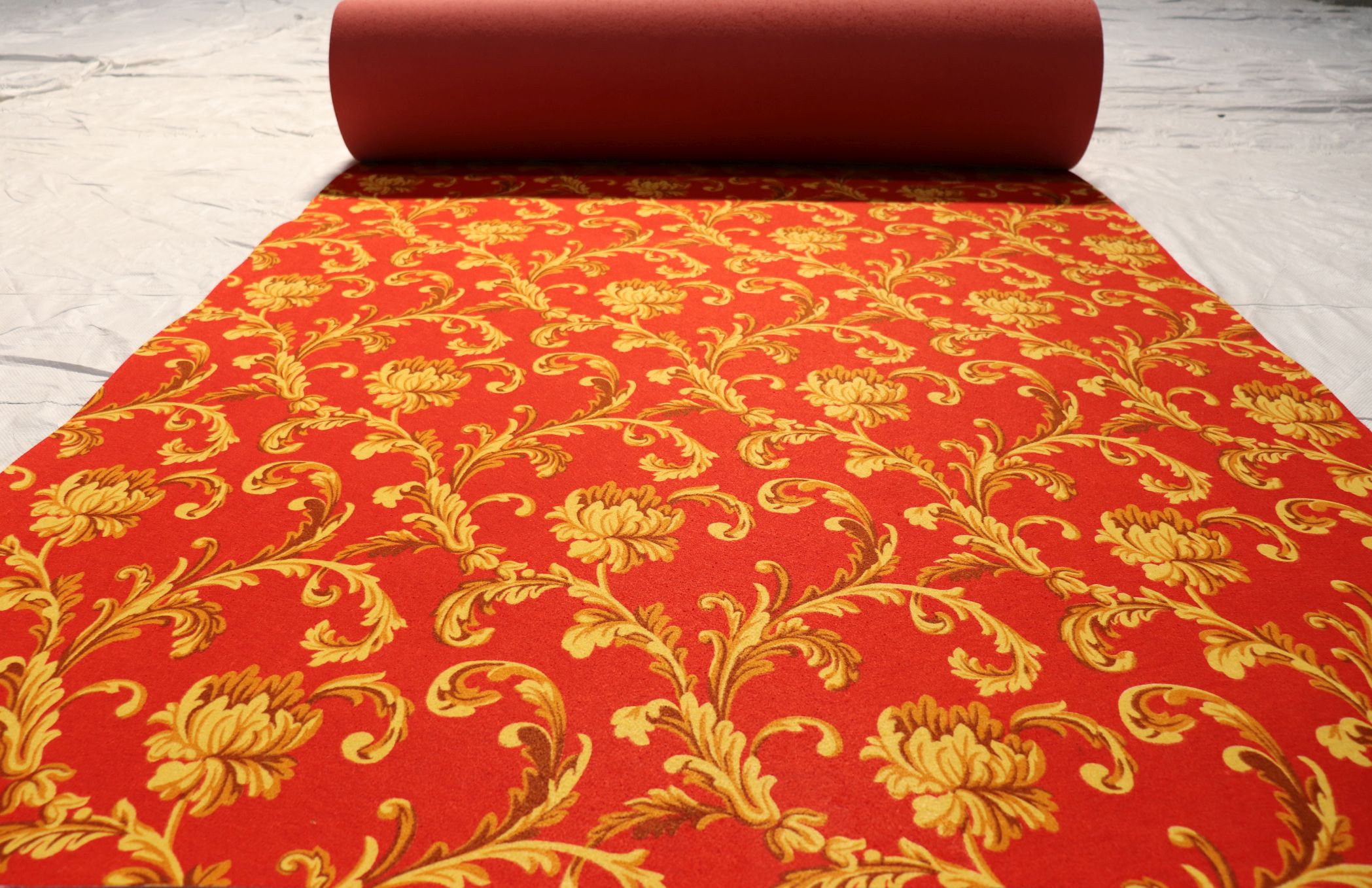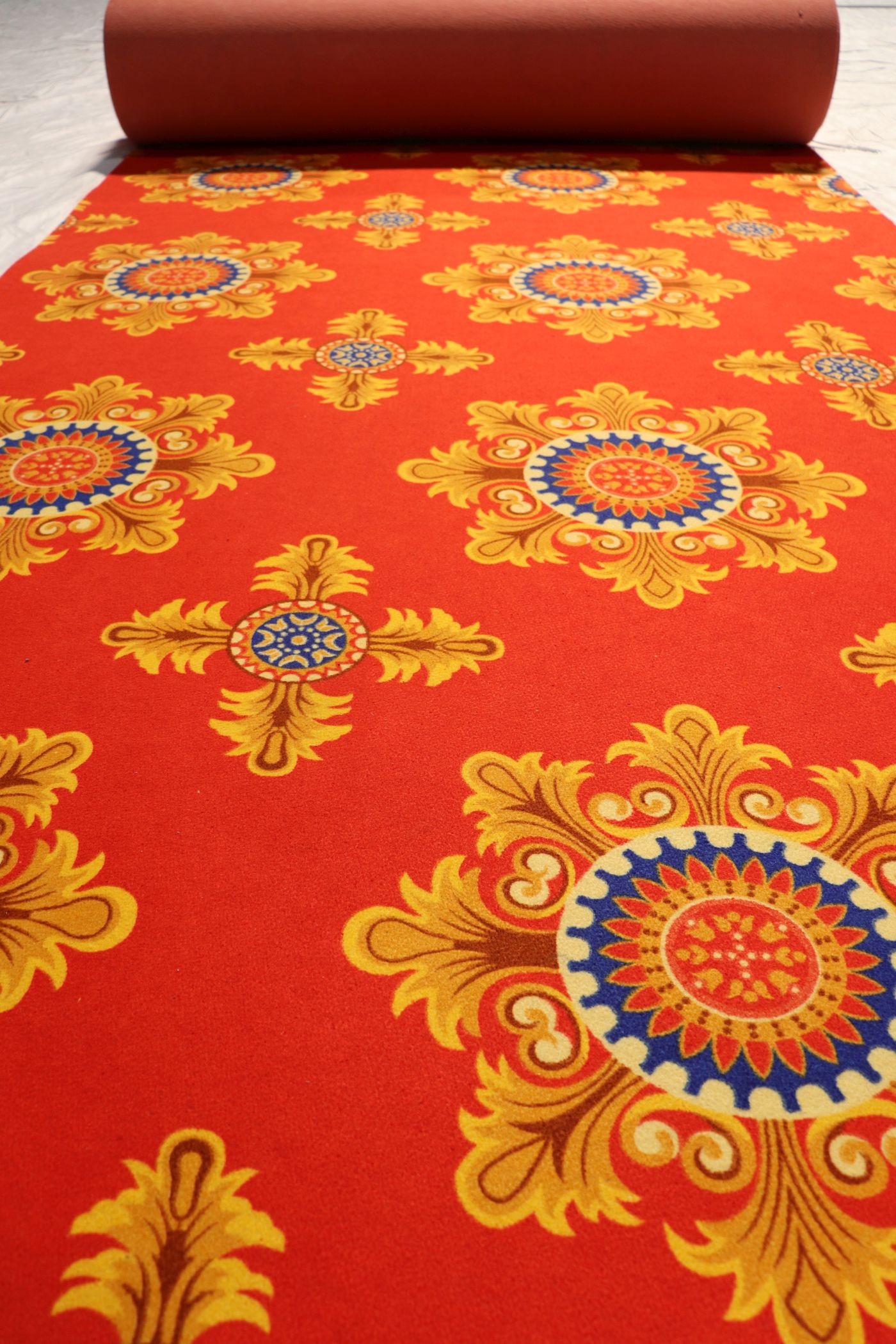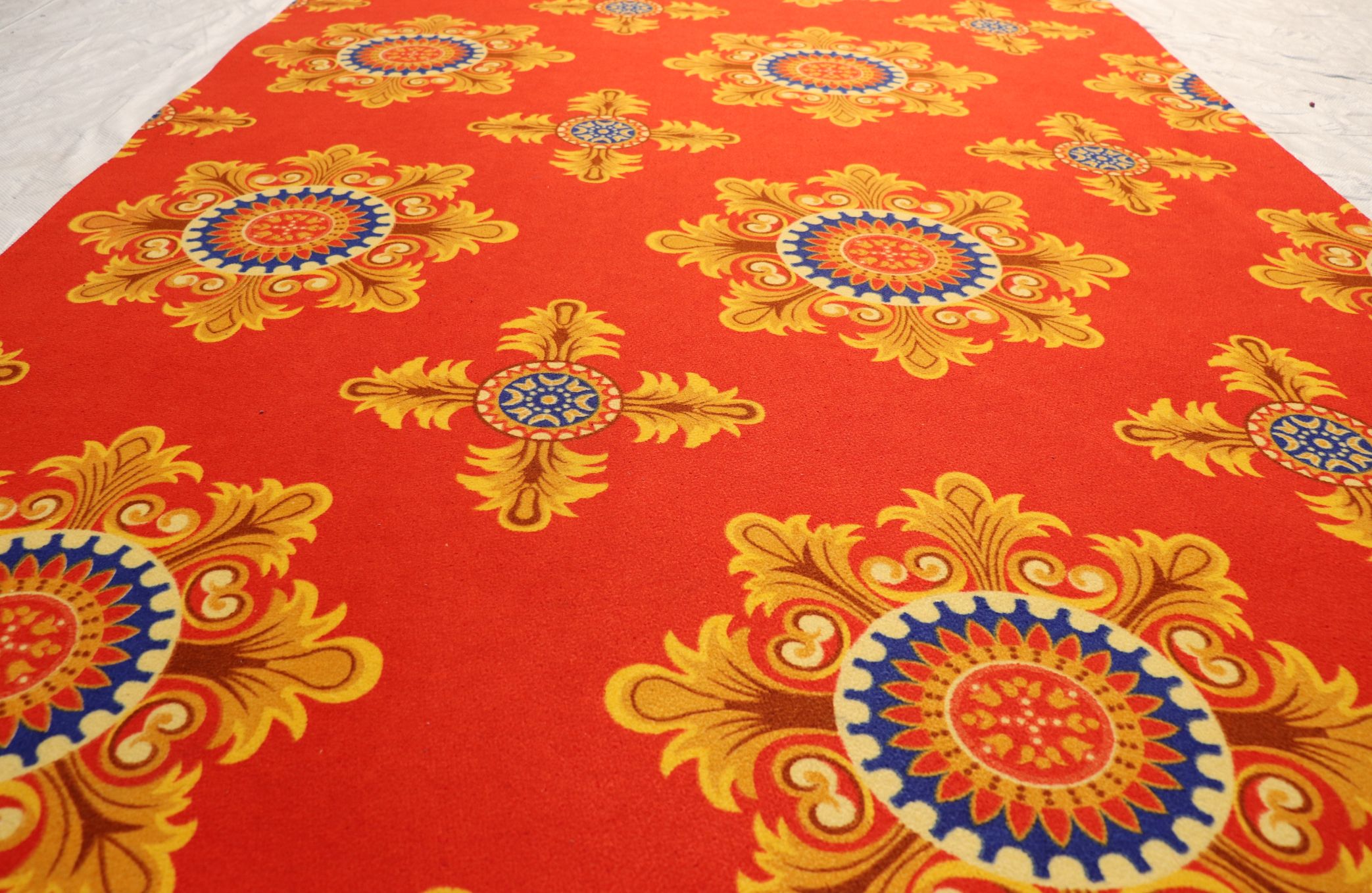Rotary Printing Carpet
Printing has added value to textile items through various processes, ranging from hand-blocks to technology-driven digital printing and rotary printing services. The latter is the most popular because of their unique necessary qualities. Digital and rotary screen printing techniques respond to the growing demand and prevalence in the best possible ways. Both segments improving day by day and work to control constraints such as ink performance, print effectiveness and quality, substrate handling, wash and wear fastness, and effluent discharges.
Due to the diverse application areas, digital and rotary printing services tend to target separate market segments. While digital printing, which is more expensive but focuses on picture clarity and sharpness, is mostly targeted at boutique shoppers and designers, rotary printing is the favoured printing method for carpet exporters in Panipat and job-workers with large orders.
What’s the difference between digital printing and rotary printing?
Since both digital and rotary have their uses, commercial prospects are expanding in both categories. Digital printing’s capacity to create abstract, submerged, mirrored, psychedelic, and photographic prints have fueled its high-fashion segment growth. Still, rotary printing’s ability to satisfy bulk needs and generate discharge, burnout, and foil prints have made it a mass-market preference.
Though both digital and rotary have drawbacks, the rotary is superior to digital in many respects and vice versa. In the printing world, an intriguing trend is that both processes attempt to catch up to each other to present clients with a wider range of options. When it comes to the enormous advancements in the digital and rotary printing industries over the previous year.
What is a rotary printing carpet designed by carpet manufacturers in India?
It’s crucial to clarify that when we say “printed carpet,” we’re not talking to a single dyeing technique but rather a group of techniques. A printed carpet with injection dyes is known as an injection-dyed carpet. The degree of fibre saturation distinguishes injection-dyed carpets from other printed carpets.
Digital printing and screen printing, for example, are two more processes for printing on carpet that does not require full saturation of the yarn. Instead, they entail printing the design on top of the yarn’s top layer.
Pre-dyed versus injection-dyed carpets are the most significant ways to compare to help you choose the best printing process for your rotary printing carpet project.
Have questions or want to get started? We are ready to help you with a smile!
What are the pros and cons of a pre-dyed rotary printing carpet?
Pros: One of the primary benefits of choosing a pre-dyed carpet is the fullness and clarity of the colours and the fact that they are less expensive than injection-dyed carpets.
Cons: If you choose a carpet manufactured from pre-dyed yarns, your pattern options will be more limited. Intricate drawings will most likely seem pixelated, and you won’t be able to achieve the same level of fading as you would with other printing processes. Because outside vendors frequently give pre-dyed yarn, the lead time on carpets created with it is also greater.
What are the pros and cons of injection dyed rotary printing carpet?
Pros: Your design options with injection-dyed carpets are virtually limitless. You can build elaborate patterns, motifs, and fading seamlessly. When you choose a carpet manufactured with injection-dyed yarns, you may also expect a faster lead time.
Cons: Injection dyed carpet can’t match the pre-dyed carpet’s definition or colour richness. Injection-dyed carpets are also more expensive.
Printed carpets vs Pre-dyed carpets: A recall
- A pre-dyed carpet is ideal for solid-colour designs or mild patterning since it adds depth and character to the colour.
- Carpets created using pre-dyed yarns are less expensive, but they take longer to produce.
- Injection-dyed carpets, also known as printed carpets, provide the most creative flexibility and are ideal for projects requiring detailed motifs or patterns.
- Printed carpets constructed of injection-dyed yarns are more expensive, but they have a shorter lead time.
When deciding between pre-dyed and printed carpets, how can you ensure quality?
There is no one-size-fits-all dyeing procedure, and within each method, there are variable degrees of quality. The ideal strategy is to choose your chosen carpet printing process depending on the project’s characteristics.
After that, seek a high-quality carpet manufacturer in Panipat with the required certifications to ensure that your buy is of excellent quality, has a lengthy warranty, and you have all the assistance you require to be happy with your purchase.

